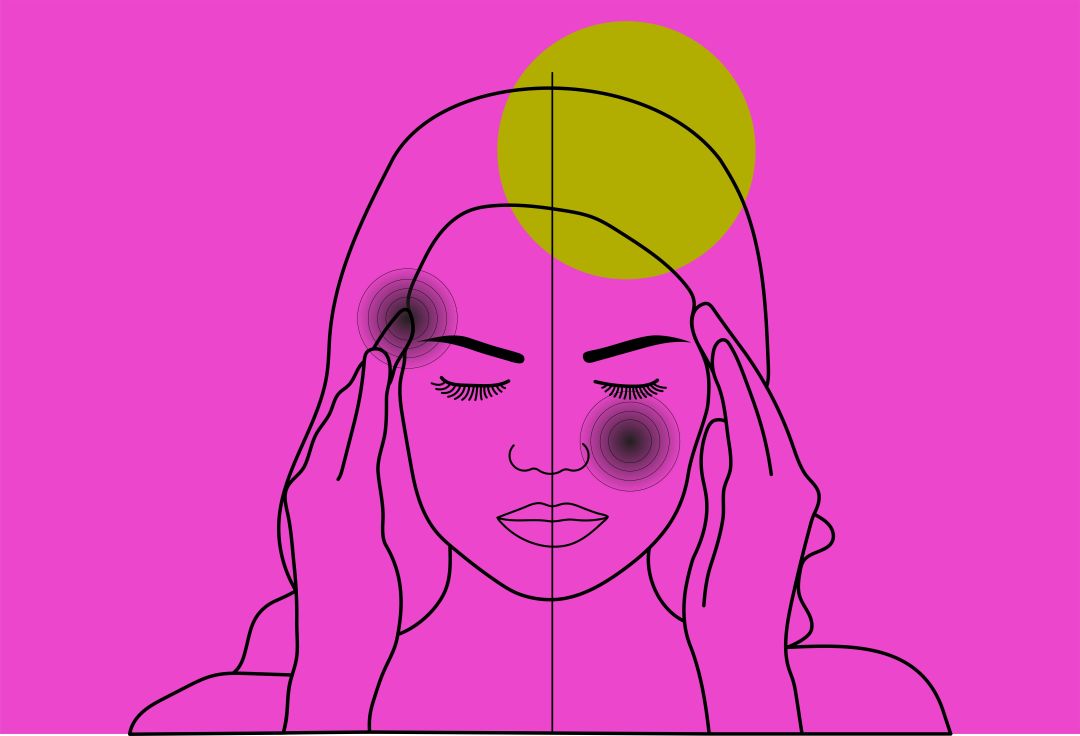What's the Difference Between a Headache and a Migraine?

Image: Kari Perrin
Migraines affect 39 million men, women and children in the United States alone. Their laundry list of triggers cause a painful, one-sided headache that can be hard to distinguish from a normal headache without the help of a professional.
So how can you tell the difference, and catch the warning signs for both? Dr. Julio Cantero, a neurologist at Intercoastal Medical Group, has answers.
“Migraines are considered a type of headache, but it’s most often it’s location and associated symptoms that make the difference,” says Cantero. “Migraines are typically located on one side of the head with moderate to severe intensity. They can also prevent you from doing daily tasks.”
What causes a migraine? “The condition is usually inherited and can run in families,” says Cantero. “Other triggers include certain foods, stress, lack of sleep, dehydration, certain smells, changes in barometric pressure [weather patterns], or simply changes in daily routine.”
Symptoms associated with migraine include nausea, vomiting and photophobia, or sensitivity to light. Those who experience migraines undergo a “pre-headache” phase called prodrome, where fatigue, difficulty concentrating and speaking, or dizziness can occur. The next phase, called aura, causes visual disturbances, such as seeing spots or temporary loss of vision in parts of the eye. While not everyone with a migraine experiences aura, it is one of the more common warning signs. They can last five minutes to one hour, while the entirety of a migraine can last three days and occur at any time.
Those who experience chronic migraines have 15 or more attacks per month. Consultation with a neurologist can determine the best form of care needed to block and reduce these attacks. Episodic migraine happens less than 15 times per month, but can still require treatment.
Are there any new treatments available for migraine? Calcitonin gene-related peptide receptor antagonists, or CGRP antagonists, are a new injectable that patients receive once a month to prevent migraine attacks. Cantero says this medication can also be administered at an infusion center once every three months.
Another new medication called Nurtec, comes in pill form and is taken when symptoms are already occurring. Nurtec has also been recently approved as a preventative for migraine.
“Older classes of migraine medications, called triptans, which work by slowing down overactive nerves in the brain, are now being replaced by these new treatments,” says Cantero.
Insurance can cover the cost of Nurtec and most other pill forms of migraine medications. CGRP infusions may cost patients up to $100 per session, depending on their insurance, because it must be administered at an infusion center. The injectables will cost the amount of a patient’s co-pay; however, full cost would be almost $700 once a month.
So how are headaches different from migraines?
“Headaches are different from migraines in that you can wake up without a headache and develop one throughout the day,” says Cantero. “There are different types, including tension and cluster, and they occur all over the head.”
Tension headaches typically occur in the back of the neck and head. Cluster headaches can be at the front or feel like a band squeezing around the circumference of your skull. They typically last 30 to 120 minutes and occur around the same time most days.
Stress is the most common culprit of tension and cluster headaches, says Cantero. When our neck and shoulder muscles are tightened, it causes pain in the surrounding areas. The membrane of the skull is also pulled due to this tightening, so patients can complain of pain at the front of the head as well. Some medications may cause headache, and reactions to certain foods can, as well.
“Common headaches can be treated at home,” says Cantero. He recommends hot compresses to prevent pain and cold compresses to relieve acute pain. Taking anti-inflammatory medications such as Ibuprofen, or a pain reliever such as acetaminophen, can help reduce headache pain, as can some caffeinated drinks. Sleep and reduction and of light and sound can help with symptoms of migraines, as well.
“When looking for warning signs and telling the difference between the two, the key factor is that patients don’t feel like doing what they normally would with a migraine,” says Cantero. “If they experience the prodrome and aura, then it’s a migraine. If they wake up fine and develop a headache by the afternoon, it is more likely a cluster or tension headache.”



